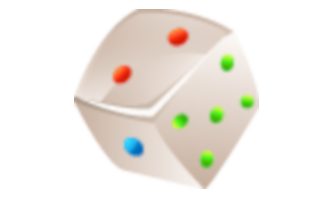Grouping of Animals
Science, Grade 3
Grouping of Animals
Study Guide

Grouping of Animals
Flash Cards

Grouping of Animals
Quiz

Grouping of Animals
Worksheets

Grouping of Animals
Games

Study Guide Grouping of Animals Science, Grade 3
❮
1
/
4
❯
GROUPING OF ANIMALS Animals can be classified, or grouped together, by the things they have in common, such as how they act, where they live, or how they look. This is one way scientists organize what they are studying. Scientists separate animals into two main groups related to whether the animal has a backbone in its body or not. Those animals with backbones are part of the vertebrates group. Those animals without a central backbone are invertebrates. Vertebrates There are five main groups of vertebrates based on specific animal traits and characteristics. Those groups include fish, birds, reptiles, amphibians, and mammals. Fish are vertebrates that live their whole lives in water. Fish breathe oxygen through their gills and have scales on their bodies. © Copyright NewPath Learning. All Rights Reserved. Permission is granted for the purchaser to print copies for non-commercial educational purposes only. Visit us at www.NewPathLearning.com.
Birds are also a group of vertebrates. A bird has feathers, wings, and a beak. Birds breathe oxygen through their lungs. Reptiles are also a group of vertebrates. Snakes, crocodiles, and turtles are all examples of reptiles. Reptiles breathe through their lungs. Another group of vertebrates are amphibians, which include frogs and toads. Amphibians live in water and on land. Most amphibians start off breathing through their gills in water at a very young age. As an amphibian grows and begins to live on land, it develops lungs in order to breathe on land. Mammals are also vertebrates. Mammals are animals that have hair, breathe through their lungs, and feed their babies milk from the mother. Examples of mammals are dogs, cats, and humans. Lesson Checkpoint: What are the five main groups of vertebrates? © Copyright NewPath Learning. All Rights Reserved. Permission is granted for the purchaser to print copies for non-commercial educational purposes only. Visit us at www.NewPathLearning.com.
Invertebrates Now for the animals without backbones. Invertebrates are animals that do not have a backbone. Most animals living in the world today are invertebrates. A spider is an example of an invertebrate. Most kind of invertebrates are insects, such as flies. Isn’t it amazing that there are more of this kind of animal than vertebrates on the Earth! Invertebrates do not get as big as vertebrates are able to. The bones and backbone of a vertebrate helps support its body, which means a vertebrate can be larger. Invertebrates have liquid sacs or shells that serve as support for their bodies. Lesson Checkpoint: What is an invertebrate? © Copyright NewPath Learning. All Rights Reserved. Permission is granted for the purchaser to print copies for non-commercial educational purposes only. Visit us at www.NewPathLearning.com.
Four Kinds of Invertebrates There are four major kinds of invertebrates: sea jellies, arthropods, worms, and mollusks. Sea jellies have soft bodies, they live in the ocean, and they have body parts that can sting. Jellyfish are examples of sea jellies. Arthropods’ skeletons are on the outside of their bodies. Arthropod bodies are made up of several parts and sections. An example of an arthropod is a beetle. Worms are also invertebrates. Worms have soft bodies and live underground. Mollusks also have soft bodies, but most mollusks have shells to protect and support their soft bodies. An example of a mollusk is a snail. Lesson Checkpoint: What are the four major kinds of invertebrates? © Copyright NewPath Learning. All Rights Reserved. Permission is granted for the purchaser to print copies for non-commercial educational purposes only. Visit us at www.NewPathLearning.com.
